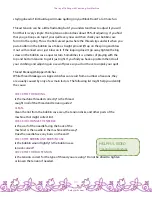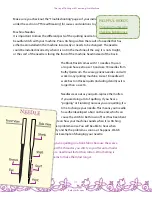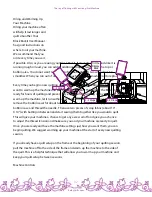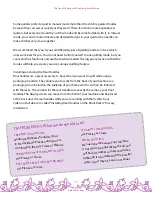
The Joy of Quilting with Your Long-Arm Machine
38
KathyQuilts.com
Lesson Three:
Getting Ready to Quilt
In this lesson, we will discuss preparing your quilt, loading it on the frame, and actual
quilting. The goal of this chapter is to help you learn foundational skills that will lead to
more advanced and technical quilting, which we will discuss in Lesson 4. We strongly
recommend that you first quilt on “practice quilts” rather than beginning on hand-
pieced or expensive quilts, as you will likely make mistakes as you are learning. Do not,
we repeat, DO NOT start quilting on a real pieced quilt that you have sewn unless you
have completed practice quilts!! This is very important. Learning how to use a new
machine takes trial and error and you do not want to experience that while you are
trying to quilt a project that you have put a lot of time into. PRACTICE FIRST, and you
will not be sorry.
We suggest using two whole pieces of scrap fabric sandwiched together with batting
in the middle. Practice quilts are great to learn on as you can make mistakes and
practice new techniques. These are also great to donate to charities, animal shelters,
or to keep in your quilt collection as a beginning keepsake. Practice using the Block
Rockit’s different modes and settings as you quilt and try new designs until you are
comfortable with the feel of the machine. Quilting requires a lot of practice, patience,
and trial and error. Plan on spending several days, weeks, or months, as needed,
practicing. As you gain experience you will be able to execute beautiful quilting on
the projects you have been saving.
Preparing your Quilt
It is important to make sure a quilt is sewn and pieced together properly in order for it
to be quilted with ease. Here are some important steps to incorporate in the piecing
process, which will help in the quilting process.
1. Cut all the pieces of your quilt precisely.
Make sure that everything is squared up as you measure and cut. This is especially
true as you cut longer pieces of fabric, like your borders; they need to be equal
along the whole length and width of the strip. If the edges are not square and the
lengths and widths are not equal, it will cause distortion as you attach them to your
















































